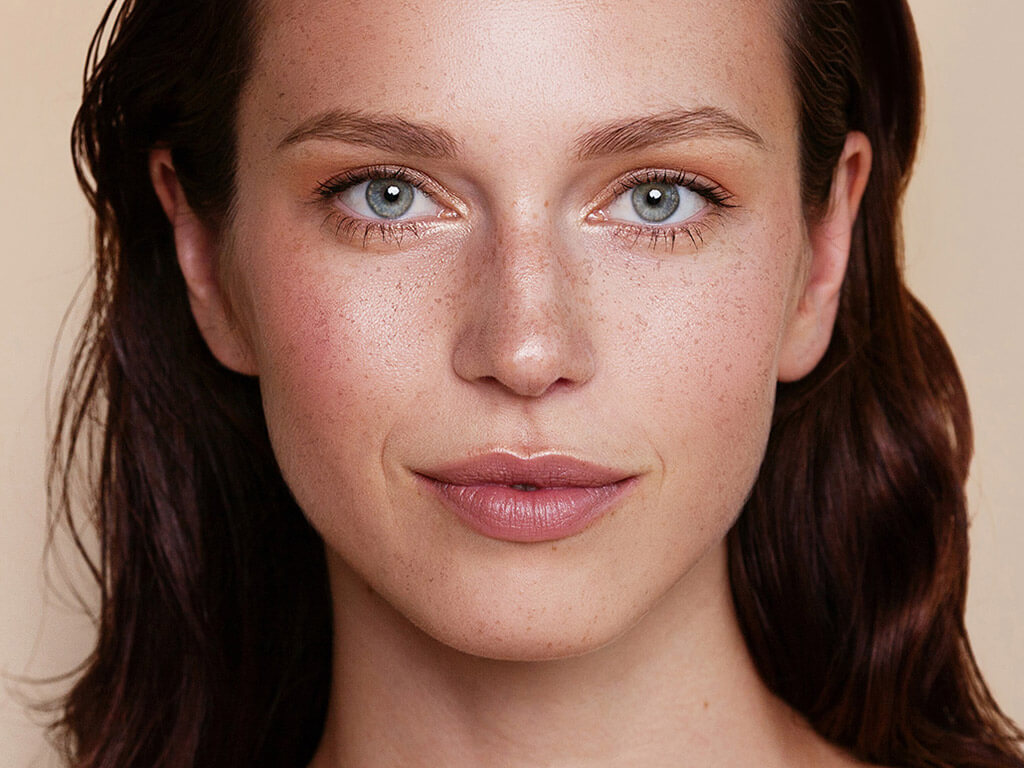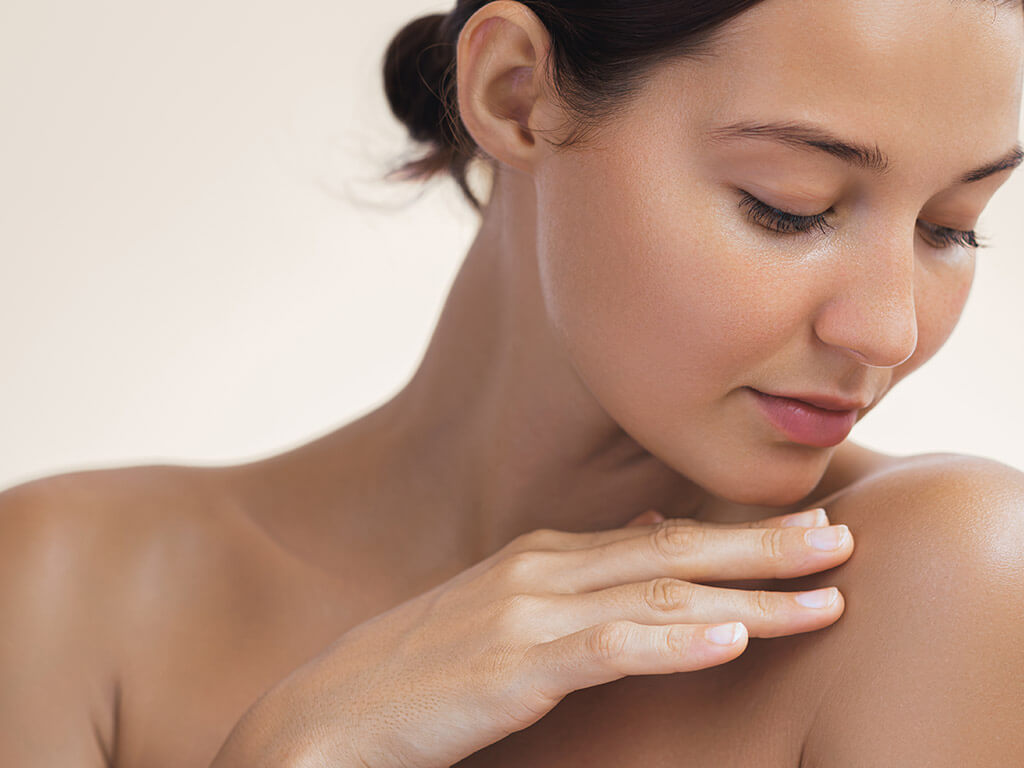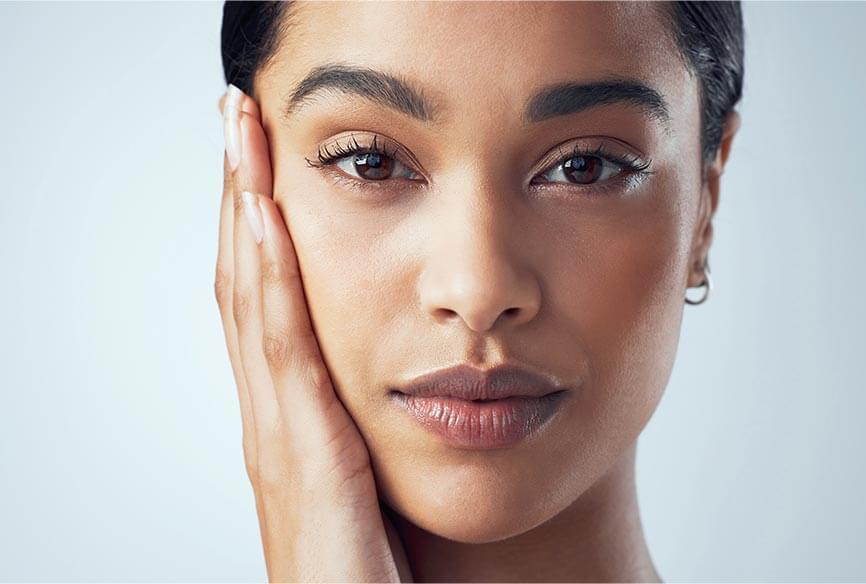Fine Lines, Wrinkles, Expression Lines, and Gravity Lines: What’s the Difference?
The skin is composed of multiple layers—epidermis, dermis, and hypodermis—that are anchored together by a collagen-rich network. Over time, this structure weakens, leading to various forms of wrinkles.
- Fine Lines
These are shallow and superficial marks often considered the earliest signs of aging. They usually develop due to a loss of hydration and initial collagen breakdown and are commonly found around the eyes and mouth.
- Fine Lines
These are shallow and superficial marks often considered the earliest signs of aging. They usually develop due to a loss of hydration and initial collagen breakdown and are commonly found around the eyes and mouth.
- Expression Lines
Also called dynamic wrinkles, these form due to repeated facial movements like smiling, squinting, or frowning. Initially reversible, they become more permanent over time, resulting in crow’s feet, forehead lines, and nasolabial folds.
- Wrinkles
These are deeper than fine lines and signal more significant structural changes in the skin, including loss of elasticity, collagen degradation, and dermal thinning.
- Gravity Lines
As skin loses firmness and sags due to gravity and tissue laxity, gravity lines form. These manifest as drooping eyelids, flabby cheeks, jowls, and a double chin. They are often accompanied by volume loss in underlying fat and bone.
Causes of Skin Aging and Wrinkle Formation
Wrinkle development is a multifactorial process that includes both internal (natural aging) and external (environmental) factors:
- Loss of Hydrolipidic Film (HLP): Reduces the skin’s natural protective barrier.
- Collagen & Elastin Degradation: A decrease of 1% collagen per year leads to a less resistant dermal matrix.
- Reduction in Fibroblasts & ECM Components: Key to elasticity and hydration, their decline results in sagging and roughness.
- Sun Exposure (Photoaging): UVA and UVB radiation account for up to 90% of premature aging, breaking down connective tissue and forming free radicals.
- Hormonal Changes: Especially post-menopause, reduced oestrogen accelerates skin thinning and wrinkle formation.
- Lifestyle Factors: Smoking, alcohol consumption, poor diet, and chronic stress significantly contribute to early aging.
- Genetics and Ethnic Differences: Some populations are more prone to wrinkles or pigmentation based on dermal thickness and structure.
Gender and Racial Differences in Skin Aging
Skin aging doesn’t affect everyone in the same way. Research shows that both gender and ethnicity play significant roles in how skin changes over time.
- As we age, skin naturally loses moisture and becomes more prone to dehydration. Without proper care, this can weaken the skin barrier and accelerate signs of aging.
- While excess oil (sebum) can contribute to breakouts, it’s also essential for maintaining a healthy skin barrier. Sebum helps moisturize and repair the skin, and its production decreases with age. However, men typically produce more sebum than women due to higher testosterone levels. Women, on the other hand, experience more fluctuation in sebum levels throughout their menstrual cycle, which can affect skin sensitivity and hydration.
- Wound healing also differs by gender. Men tend to heal more slowly and may be more prone to scarring, again due to higher testosterone levels. Women generally experience more efficient skin regeneration.
- When it comes to wrinkle formation and skin structure, differences are even more pronounced. Women often experience a gradual onset of wrinkles and skin sagging, particularly around menopause, when there’s a sharp decline in collagen, bone density, and skin elasticity. In contrast, men tend to maintain thicker skin for longer but experience a more sudden thinning of the dermis after age 40, leading to deeper-set wrinkles.
These variations in hydration levels, oil production, and skin anatomy between men and women significantly influence how each person’s skin ages, and highlight the need for personalized skincare approaches.
As for ethnicity :
- Caucasian Skin: Wrinkles tend to form earlier due to thinner dermal structure, especially under sun exposure.
- Asian Skin: More prone to early pigmentation issues but experiences wrinkles slightly later.
- Black Skin: Thicker, more compact dermis offers protection against wrinkles, though can show volume loss and uneven tone.
Recommended Ingredients for Smoothing and Preventing Wrinkles
A range of topical actives can prevent and reduce the appearance of wrinkles. Focus on prevention and maintaining skin health early:
Key Anti-aging Actives
|
Ingredient |
Function |
|
Retinoids (Vitamin A derivatives) |
Stimulate collagen, improve texture, fade pigmentation |
|
Alpha Hydroxy Acids (AHAs) |
Exfoliate and promote skin renewal |
|
Coenzyme Q10 |
Fights oxidative stress |
|
Antioxidants (Vitamin C, E, Ferulic Acid) |
Neutralize free radicals and boost protection |
|
Hyaluronic Acid |
Deep hydration to plump fine lines |
Note: Retinoids can increase sun sensitivity and may cause dryness or irritation. Always start low and slow with retinols in concentration and frequency of use. Beginners should always start at 0,1% and move up depending on how their skin reacts. Always use sun protection.
Prevention: The Best Long-Term Strategy
While treating wrinkles is possible, preventing them remains far more effective:
- Use Sunscreen Daily: SPF 30 or higher, broad-spectrum
- Stay Hydrated: Moisturize regularly to maintain skin barrier
- Don’t Smoke: Smoking accelerates collagen breakdown
- Limit Alcohol: Prevents dehydration-related damage
- Eat a Balanced Diet: Rich in fruits, vegetables, and healthy fats
- Gentle Skincare Routine: Avoid harsh scrubbing and cleanse after sweating
- Manage Stress and Sleep: Chronic stress and poor sleep can degrade skin over time
Our Recommendations
Reveal smoother, firmer, and more radiant skin with the Pro-Aging Anti-Wrinkles routine: your daily defense against visible signs of aging.
Start each morning with the Pro-Aging Anti-Wrinkles Day Cream, a multi-action formula enriched with polypeptides, vitamin C, and hyaluronic acid. Its silky texture melts effortlessly into the skin, delivering deep hydration and an instant plumping effect. Polypeptides help stimulate collagen to smooth fine lines, while vitamin C boosts radiance and protects against environmental stressors. Perfect under makeup or SPF, it leaves the skin visibly refreshed and ready for the day.
In the evening, transition to repair mode with the Pro-Aging Anti-Wrinkles Night Cream, a rich, restorative treatment powered by camellia oil, vitamin C, and hyaluronic acid. While you sleep, it deeply nourishes and helps firm the skin, reduce the appearance of wrinkles, and even out skin tone.
Together, this day-to-night duo offers a comprehensive anti-aging ritual that supports collagen production, reinforces the skin barrier, and reveals a smoother, more youthful complexion, morning to night.
Conclusion
Wrinkles are a natural part of aging, but their onset and intensity can vary based on many internal and external factors. Understanding the science behind fine lines, gravity-induced sagging, and expression-related creases is the first step toward building an effective anti-aging skincare routine. By focusing on early prevention, supporting the skin’s structure with powerful ingredients, and adapting to individual skin needs—whether based on gender, ethnicity, or lifestyle—you can promote long-term skin resilience and youthful vitality.
Disclaimer: This article was written with the support of artificial intelligence (AI). However, all information presented is based on verified scientific sources and has been fact-checked and reviewed by the researchers on our team. We are committed to maintaining accuracy, credibility, and scientific integrity in all published content.




